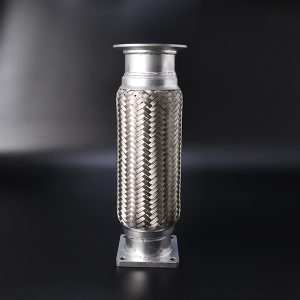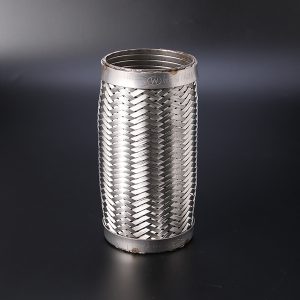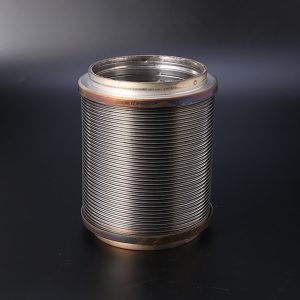


Flexible exhaust tubing is an essential component in modern automotive exhaust systems. It is designed to bend and flex to accommodate the movement of the engine and the vehicle, while also reducing vibration and noise. The design of flexible exhaust tubing plays a crucial role in its performance and durability. In this article, we will explore the factors that affect the design of flexible exhaust tubing and how they impact its performance and durability.
The material used to make a flexible exhaust is one of the most important factors affecting its performance and durability. The most common materials used for flexible exhaust tubing are stainless steel, aluminized steel, and galvanized steel. Stainless steel is the most durable and corrosion-resistant material, making it ideal for use in harsh environments. Aluminized steel is a more affordable option that offers good resistance to corrosion and heat. Galvanized steel is the least expensive option but is not recommended for use in high-temperature applications.
The braid is the outer layer of the flexible exhaust tubing that provides additional strength and protection.The type of braid used in a flex exhaust design affects its flexibility, durability and corrosion resistance. The most common types of braids used in flexible exhaust tubing are single-layer, double-layer, and interlock. Single-layer braids offer the least amount of protection but are the most flexible. Double-layer braids provide more protection but are less flexible. Interlock braids offer the most protection and are the most durable but are also the least flexible.
Flexibility
The flexibility of flexible exhaust tubing is essential to its performance and durability. The design of flexible exhaust tubing must allow for the necessary movement of the engine and the vehicle while maintaining its shape and structural integrity. The flexibility of flexible exhaust tubing is affected by its length, diameter, and the number of corrugations. Longer and narrower tubing is more flexible than shorter and wider tubing. The number of corrugations also affects the flexibility of the tubing. A higher number of corrugations results in more flexibility.
Durability
The durability of flexible exhaust tubing is critical to its performance and longevity. The design of flexible exhaust tubing must take into account the harsh environment in which it operates, including exposure to heat, vibration, and corrosive elements. The durability of flexible exhaust tubing is affected by its material, braid, and flexibility. Stainless steel tubing with an interlock braid is the most durable and long-lasting option.
In my opinion, the design of flexible exhaust tubing plays a crucial role in its performance and durability. The material, braid, flexibility, and durability are all factors that must be considered in the design of flexible exhaust tubing. By understanding these factors, you can make an informed decision when selecting flexible exhaust tubing for your automotive exhaust system. Welcome to click our website Genleelai.

